How to Speed Up the Supplier Onboarding Process
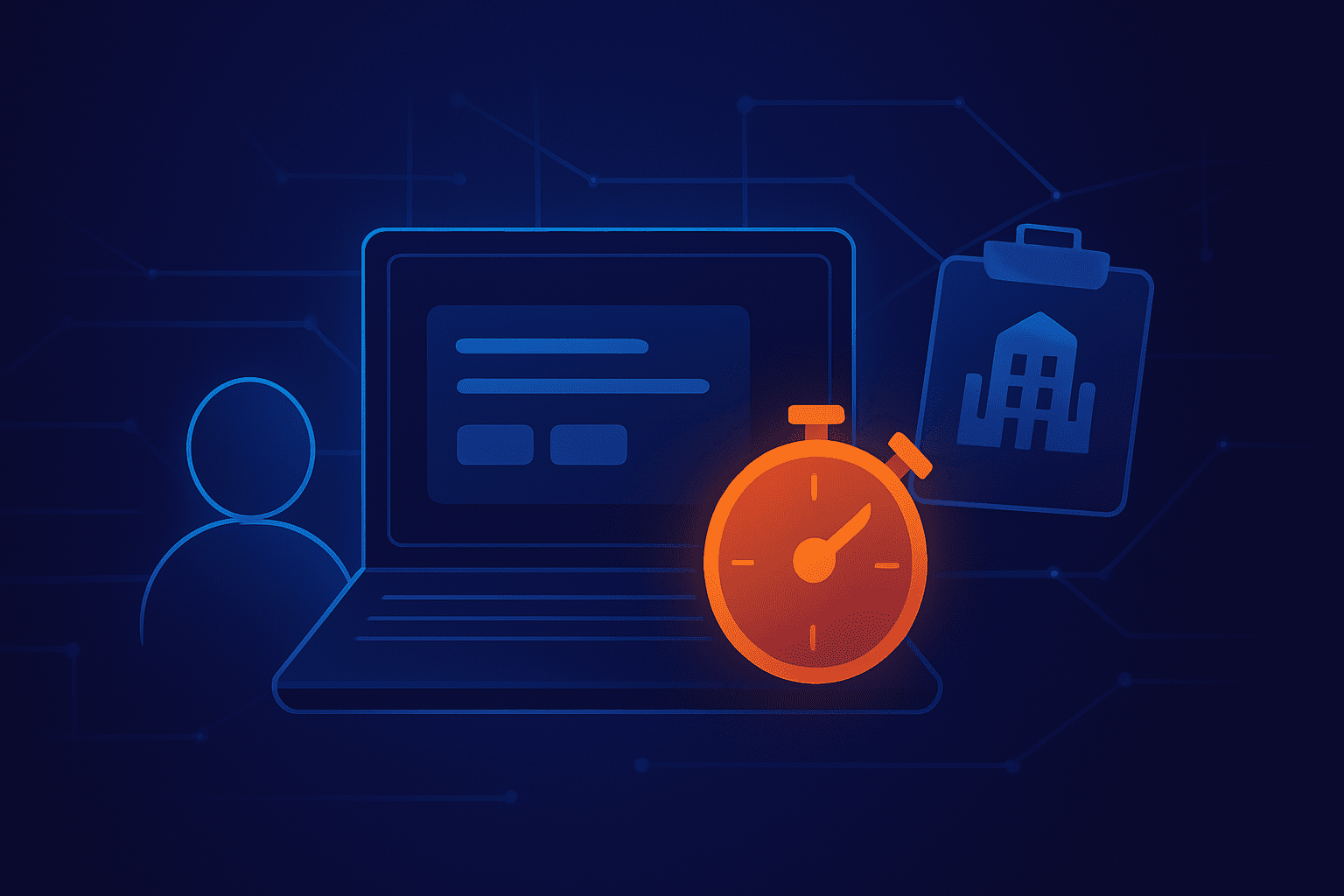

Key Takeaways:
Slow supplier onboarding is a pain point nearly every procurement team feels.
It delays project timelines, frustrates internal stakeholders, and leads to the risk of losing good vendors to competitors with faster processes.
Fortunately, there are proven ways to cut through the complexity.
Here are six practical tips to help you onboard suppliers faster, without cutting corners.
Before onboarding can begin, you need to find the right suppliers.
And this is often where delays stack up.
Traditional supplier discovery methods are slow, manual, and inefficient.
According to McKinsey, it can take up to three months to identify a single viable supplier, with sourcing teams spending more than 40 hours on the task, only to end up considering a few dozen companies out of thousands.
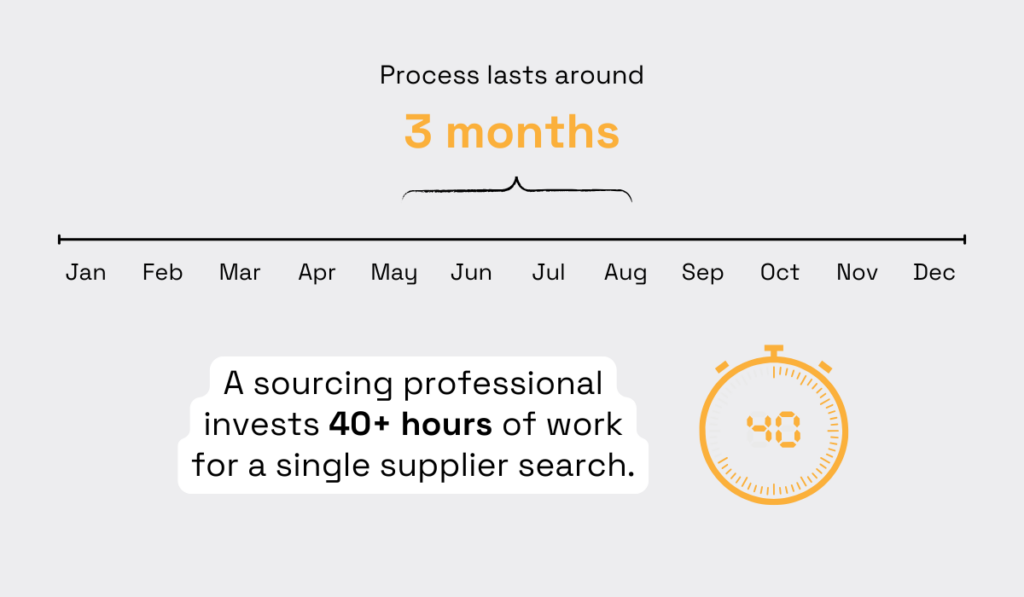
Illustration: Veridion / Data: McKinsey
Why does this matter?
Because slow discovery slows down onboarding, and in fast-moving situations, that’s a serious risk.
During supply chain crises, for example, the companies that survive and thrive are the ones that can find and onboard alternative suppliers faster than their competitors.
As Maggie Brommer, head of procurement at Unilever’s Prestige Products, puts it:
“When there is a supply-chain crisis, the key to being competitive is to be faster at finding alternative suppliers than everyone else because everyone’s looking to do the same thing.”
Fortunately, AI and machine learning are transforming this process and reducing the discovery time by 90% or more.
Data engines like Veridion use AI to scan the global web weekly and build rich, searchable company profiles with over 60 data points, across 120 million businesses in 250+ geographies.
You can search for suppliers using natural language, as shown below, or integrate the data directly into your other systems via API.
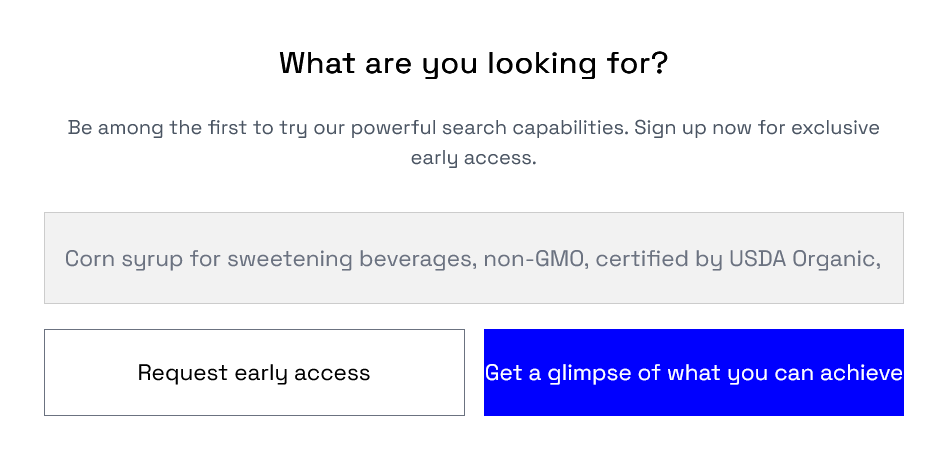
Source: Veridion
This way, you don’t just speed up discovery.
Instead, you can find suppliers that exactly match your criteria faster.
Take a look at just how much faster Veridion is compared to a manual search:
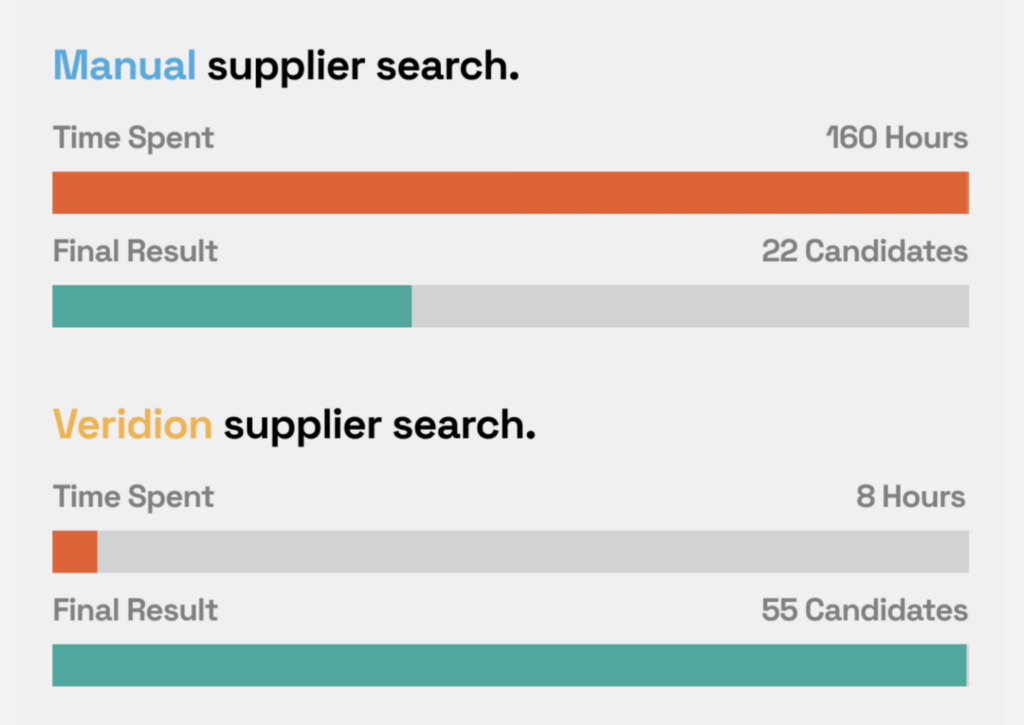
Source: Veridion
And since onboarding can’t start without discovery, accelerating this step has a direct impact on the time it takes to bring suppliers into your ecosystem.
The bottom line is this:
Better discovery = faster onboarding.
The sooner you find the right fit, the sooner you can get them onboarded and delivering value.
One of the most common reasons supplier onboarding drags out is inconsistency.
Without clear instructions, suppliers submit incomplete forms, miss critical documents, or misunderstand what’s required, forcing procurement teams into endless follow-ups and corrections.
A simple but powerful solution is to use a standardized onboarding checklist, like this one:
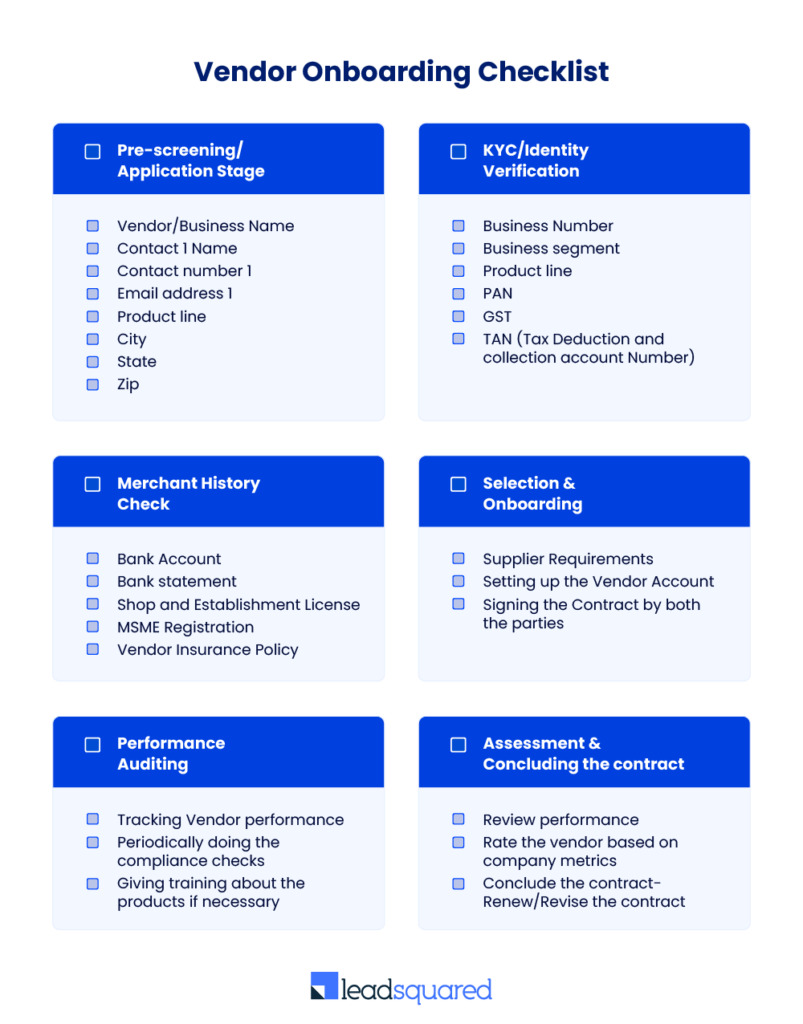
Source: Lead Squared
This is a clear, structured list of all the information and documents a supplier must provide before onboarding can move forward, including:
At the same time, such a checklist clearly defines what a procurement team has to do during the process.
Alfred Christ, Sales Manager at Robotime, uses a comprehensive onboarding checklist that spells out every detail suppliers need to submit, along with clear communication channels and defined mutual goals:
“I endorse one of the most important practices: creating an onboarding checklist with all details, including compliance regulations, a clear channel of communication, and defining mutual goals.”
The result of such a checklist?
Suppliers know exactly what is expected of them, and the back-and-forth drops significantly.
Consequently, onboarding times shrink, turning a reactive scramble into a smooth, repeatable process.
Of course, even with a checklist, data quality issues can still arise.
A 2025 TealBook survey found that 53% of procurement professionals rated their supplier data quality as poor, and none considered it excellent.
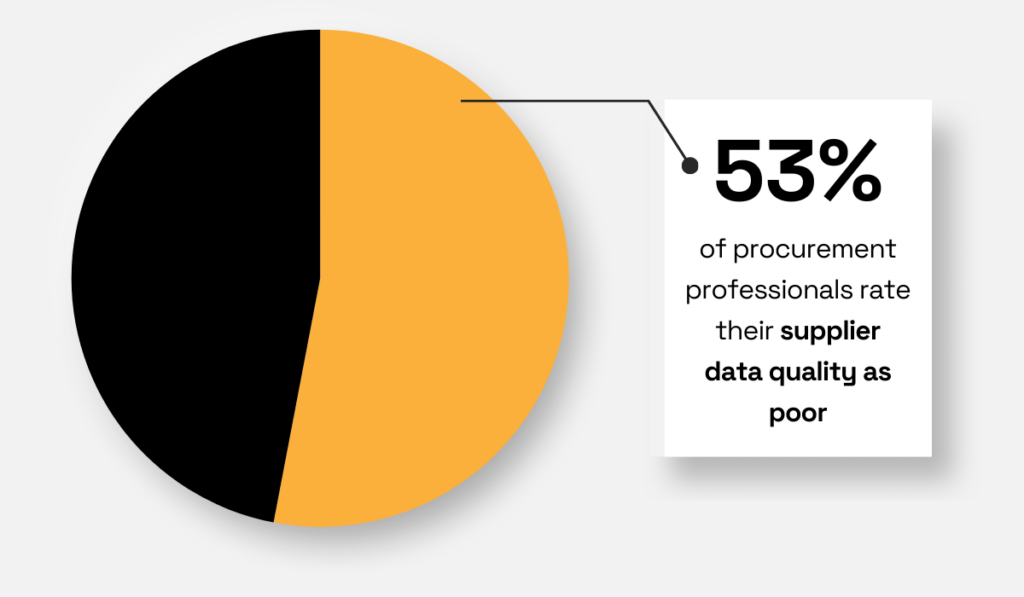
Illustration: Veridion / Data: TealBook
A checklist won’t guarantee perfect data, but it does drastically reduce the risk of incomplete or missing information, giving you a cleaner, more reliable starting point for supplier relationships.
But if you really want to guarantee better data?
You need automation.
Manual processes are still deeply embedded in supplier onboarding.
According to a recent Hackett Group study, at least 50% of companies still rely on email, Excel, Word, or ERP systems to manage onboarding activities.
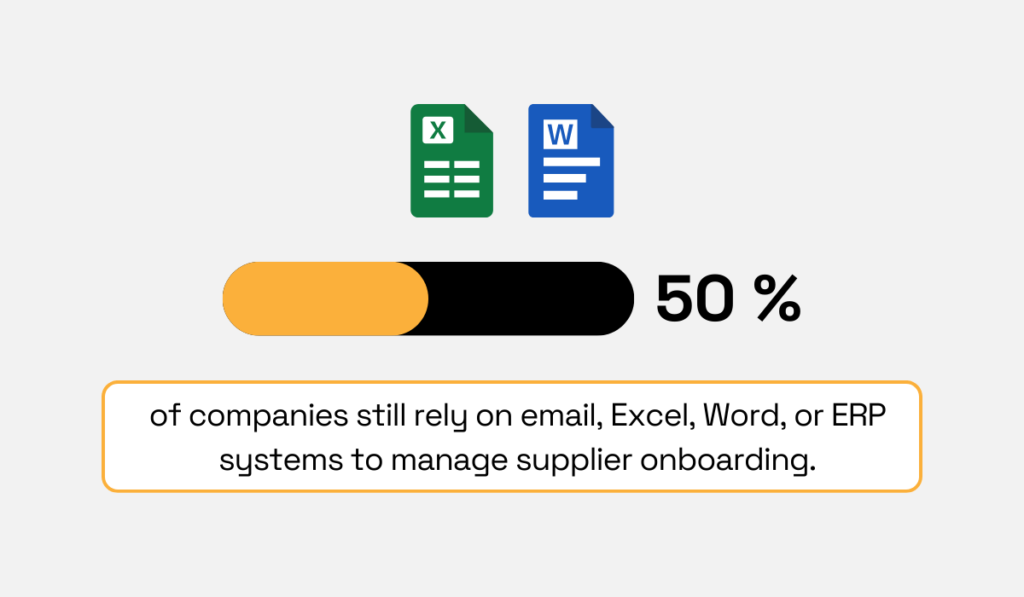
Illustration: Veridion / Data: HICX
This overreliance on manual tools causes bottlenecks, delays, missing documentation, and—unsurprisingly—bad data.
As Elvire Boinet-Bondon, European Advisor of Business Development at Graphite Connect, explains for Supply Chain Digital:
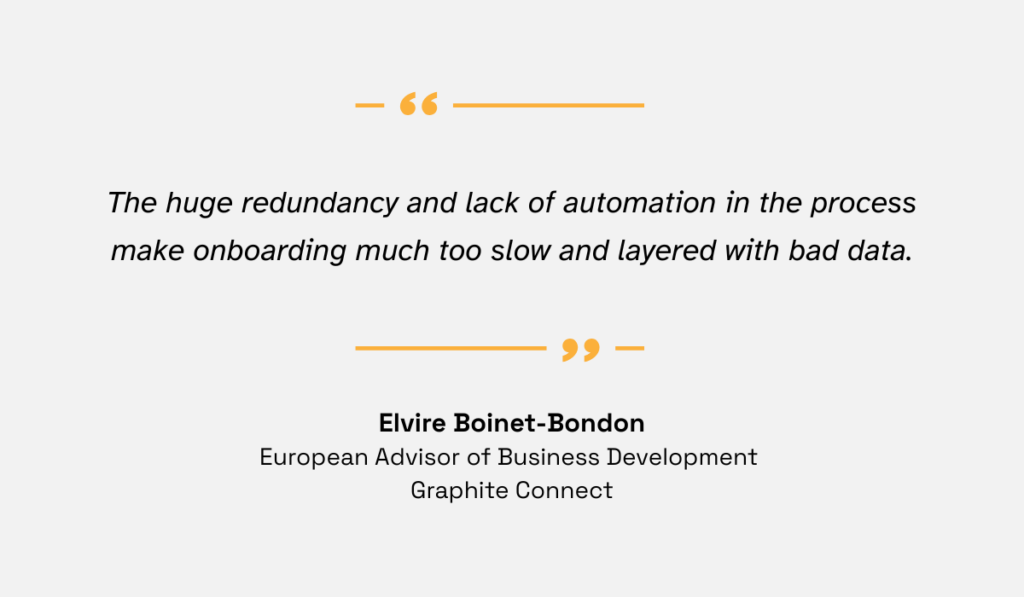
Illustration: Veridion / Quote: Supply Chain Digital
The link between poor supplier data and manual onboarding methods is direct.
When data is collected through spreadsheets and emails, human error creeps in, steps are missed, and different systems hold conflicting versions of the same information.
This not only slows down onboarding but also sets up future problems across compliance, payments, and supplier performance tracking.
Automating key parts of the onboarding process solves this by introducing structure, consistency, and speed.
Tasks like collecting supplier documentation, verifying compliance, and approving contracts can be standardized through automation, reducing the risk of errors and saving time for procurement teams.
One example of technology designed specifically for this purpose is Market Dojo.
Their platform allows procurement teams to build supplier onboarding events, design custom questionnaires, and create approval workflows—all within one centralized system.
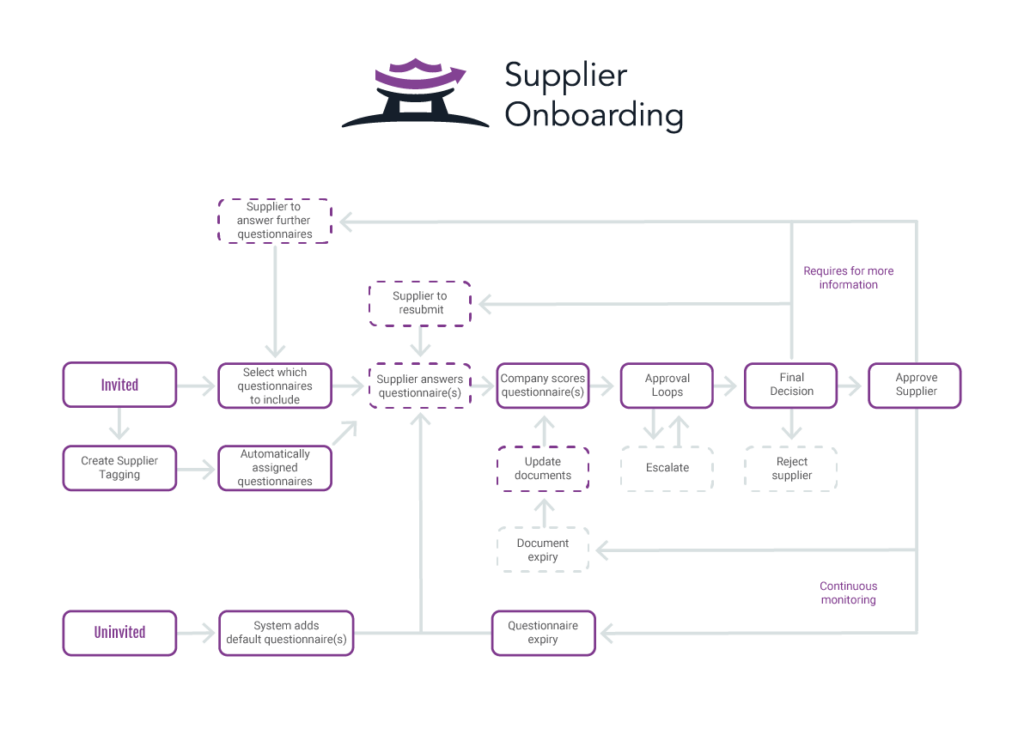
Source: Market Dojo
Because everything is managed in one space, procurement professionals can ensure suppliers submit complete, validated information at each step, improving consistency and saving significant time.
Market Dojo also integrates with data intelligence providers like Veridion, making supplier discovery, vetting, and onboarding faster, smarter, and more collaborative.
In fact, companies that adopt automation see a reduction in onboarding time by up to 80%, but speed is only part of the benefit.

Source: Informatica
Automation also plays a major role in improving communication with suppliers.
Automated workflows clarify requirements upfront, guide suppliers step-by-step, and minimize the frustrating, unclear back-and-forth that typically slows down manual onboarding processes.
Automation alone, however, is not enough if suppliers are still left guessing about their status or next steps.
Timely communication during onboarding is critical, yet often overlooked.
The 2024 Voice of the Supplier survey revealed that nearly half of the surveyed suppliers (48%) feel their most important customers could significantly enhance communication, and an overwhelming 98% agree that improvement is needed.
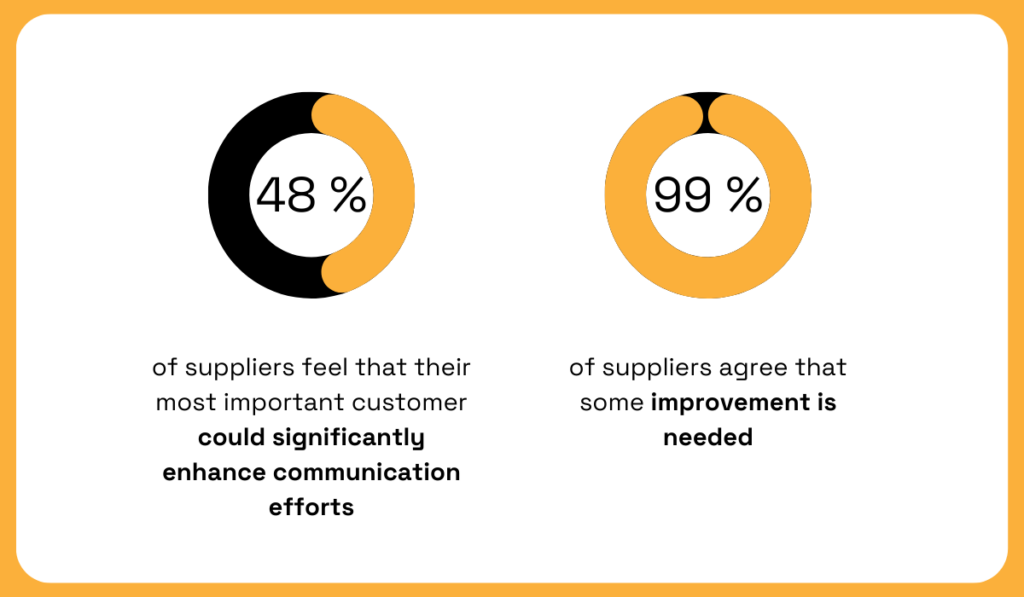
Illustration: Veridion / Data: HICX
Poor communication creates uncertainty, slows onboarding, and damages supplier relationships before the first purchase order is ever issued.
Self-service portals are one way to close this communication gap while further streamlining onboarding.
Instead of sending documents piecemeal over email, suppliers can upload all required documents, track the real-time status of their onboarding, and update their company records directly through a single digital interface.
This reduces redundant communication, eliminates confusion about what is still pending, and significantly cuts down manual entry errors.
These portals also address broader supplier frustrations highlighted in the Voice of the Supplier survey.
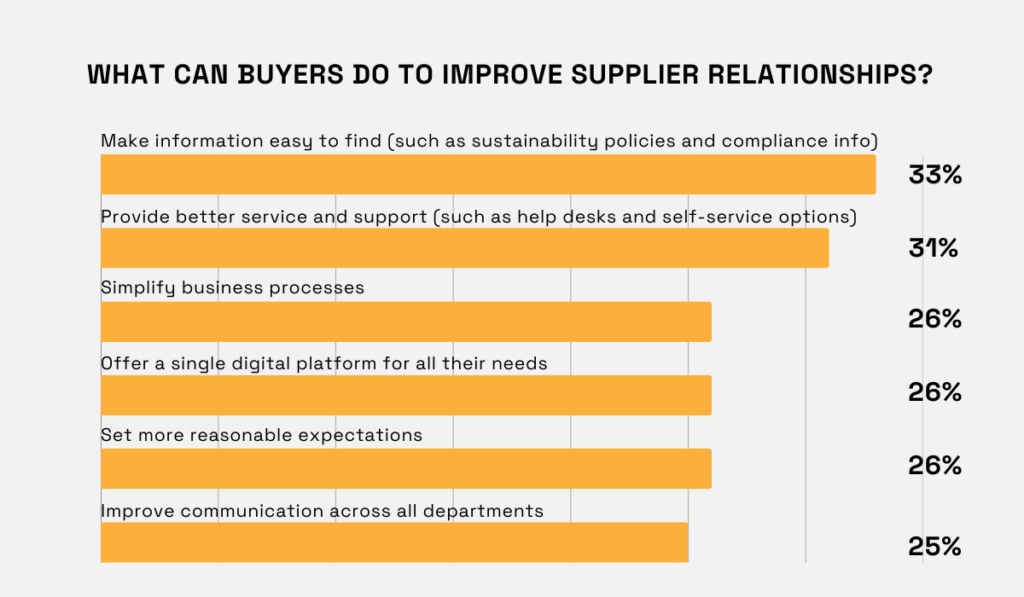
Illustration: Veridion / Data: HICX
As the image above shows, suppliers ranked “making information easy to find,” “providing better service and support,” “simplifying business processes,” and “offering a single digital platform” among the top actions their customers could take to improve relationships.
Well-designed self-service onboarding tools touch all of these areas.
They make compliance information, sustainability policies, and operational requirements easily accessible, offer centralized support, simplify documentation processes, and provide suppliers with a consistent, user-friendly entry point to interact with procurement teams.
Additionally, self-service portals can serve as valuable training tools.
They can house onboarding guides, policy documents, tutorial videos, and FAQs that suppliers can access on their own time.
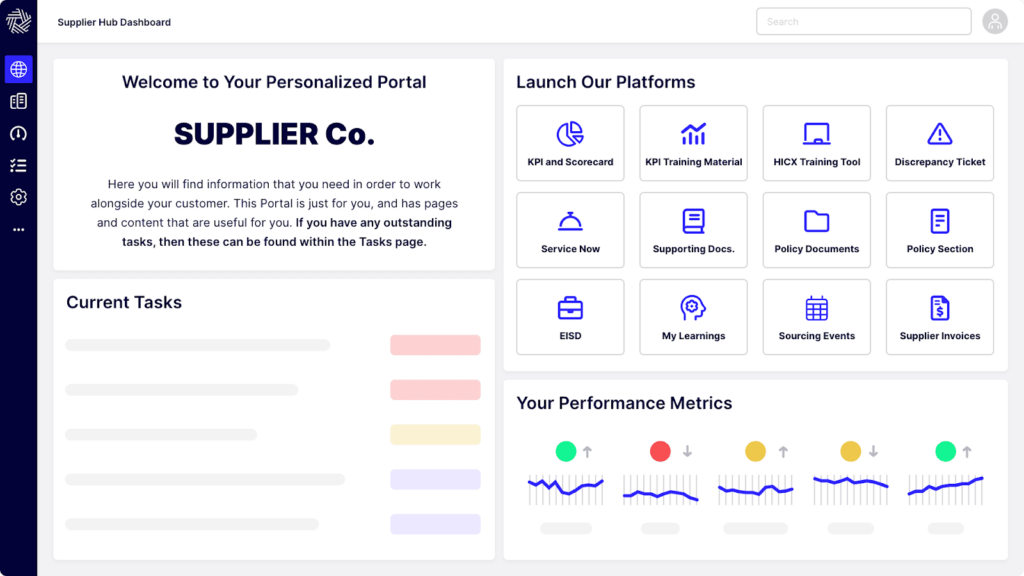
Sources: HICX
This doesn’t only accelerate onboarding, though.
It also increases supplier readiness and compliance long-term, without requiring procurement teams to manually walk every supplier through the same instructions.
Ultimately, combining automation with structured self-service transforms supplier onboarding from a frustrating, disjointed experience into a streamlined, transparent, and collaborative process.
Procurement teams move faster with fewer errors, suppliers get the clarity and support they expect, and the entire organization benefits from better data, stronger relationships, and smoother operations.
One of the most time-consuming steps in supplier onboarding is risk assessment.
Procurement teams must verify suppliers’ financial stability, regulatory compliance, ethical practices, and operational reliability before giving final approval.
And if they don’t, the consequences can be severe: from delayed deliveries and product recalls to ESG violations, fines, and reputational harm.
Real-world examples show just how costly poor supplier vetting can be.
For instance, in 2024, Airbus experienced significant production delays due to delivery issues with high-pressure turbine blades supplied by Howmet Aerospace.

Source: Reuters
Meanwhile, companies like Adidas, H&M, and Nike have faced ESG-related backlash due to supplier labor violations, damaging brand trust.
Fraud risks are just as serious.
David Post, former Managing Director at IBM Blockchain Ventures, warns:
“One of the challenges facing organizations is that suppliers can provide fraudulent bank information or misrepresent who they are in an attempt to get payment for a service rendered.”
Without proper checks, procurement teams leave themselves wide open to these risks.
The challenge is that conducting deep due diligence manually takes weeks.
And even then, you’re limited by the scope of what you can research.
This is where technology makes a big difference.
Modern solutions use artificial intelligence and blockchain to automate supplier risk assessments, scan massive data sets for red flags, and verify documentation faster than manual teams ever could.
For example, IBM reported that with blockchain-based supplier validation, onboarding times can drop from 30 days to just 2 to 5 days, cutting operational costs by around 50%.
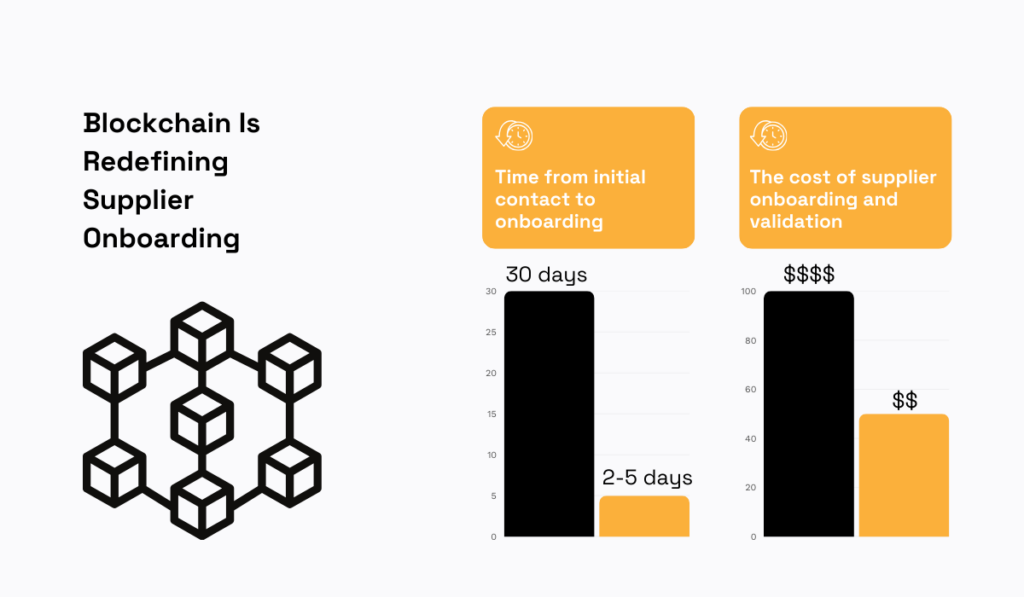
Illustration: Veridion / Data: IBM
Platforms like Veridion also help by providing structured supplier profiles that include key risk factors such as ESG ratings, financial health indicators, and compliance certifications, all updated weekly.
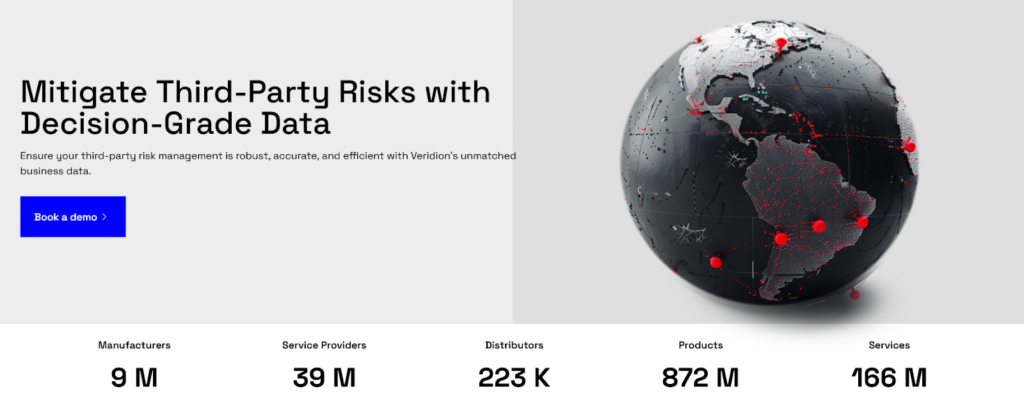
Source: Veridion
This speeds up the initial risk assessment but also allows procurement teams to continuously monitor supplier risk after onboarding, keeping the supply base safer and more resilient long-term.
In short, using the right technology turns risk assessment from a painful bottleneck into a fast, data-driven advantage.
Speeding up onboarding doesn’t always mean starting from scratch with new vendors.
One of the smartest moves procurement teams can make is to build a pre-approved supplier list.
This is an internal catalogue of thoroughly vetted suppliers—already checked for compliance, financial health, and performance—ready to activate whenever needed.
According to Jim Fleming, Senior Faculty Member at the Institute for Supply Management® (ISM®), this is especially valuable in times of crises:
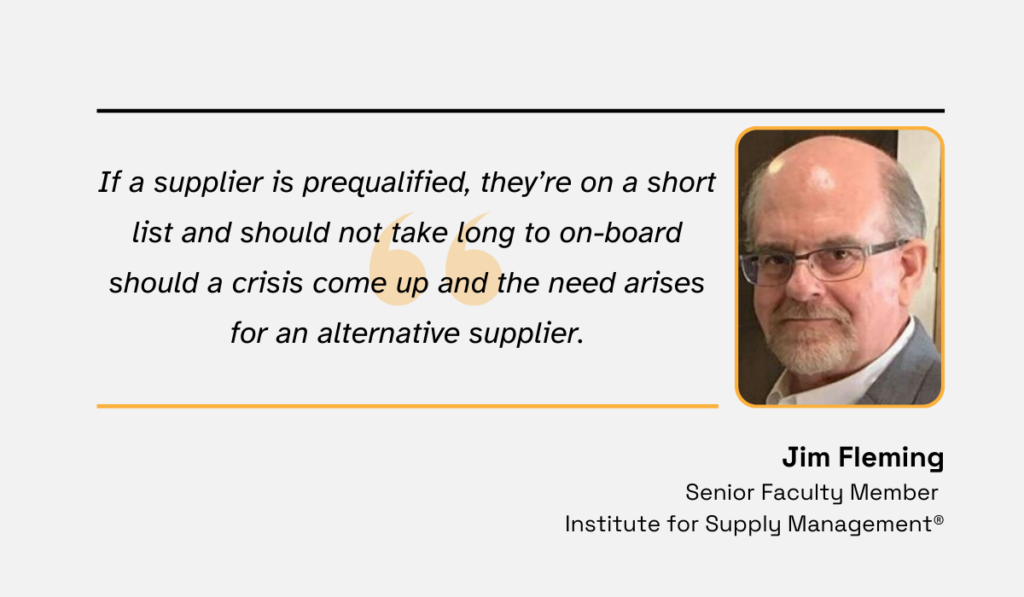
Illustration: Veridion / Quote: ISM
Pre-approved supplier lists cut onboarding times, but they have more benefits.
One of them is reducing maverick spend.
A Hackett Group study found that 56% of procurement leaders maintain pre-approved supplier lists for all goods and services.
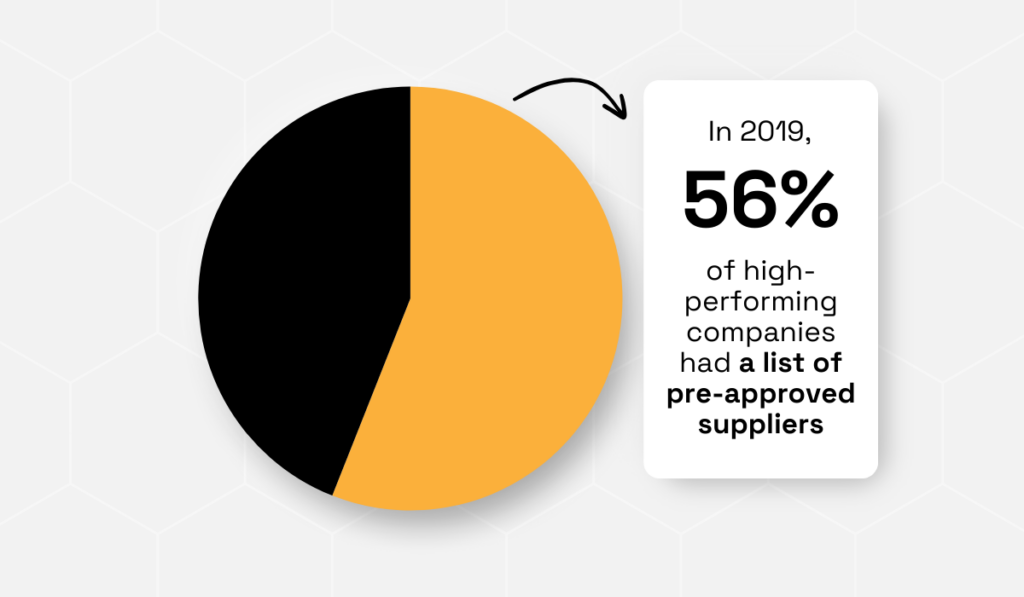
Illustration: Veridion / Data: Coupa
This helps them significantly reduce maverick spend, ensuring teams stay compliant with purchasing policies.
Building these lists requires upfront work:
But once in place, they drastically reduce the time and effort needed during sourcing emergencies or rapid growth phases.
You can take it even further by creating supplier catalogues that allow approved vendors to showcase their products, services, and pricing.
Some systems/companies even let potential suppliers pre-register their interest, completing much of the onboarding documentation before they’re ever needed.
For example, Vale, a global mining company, does this:
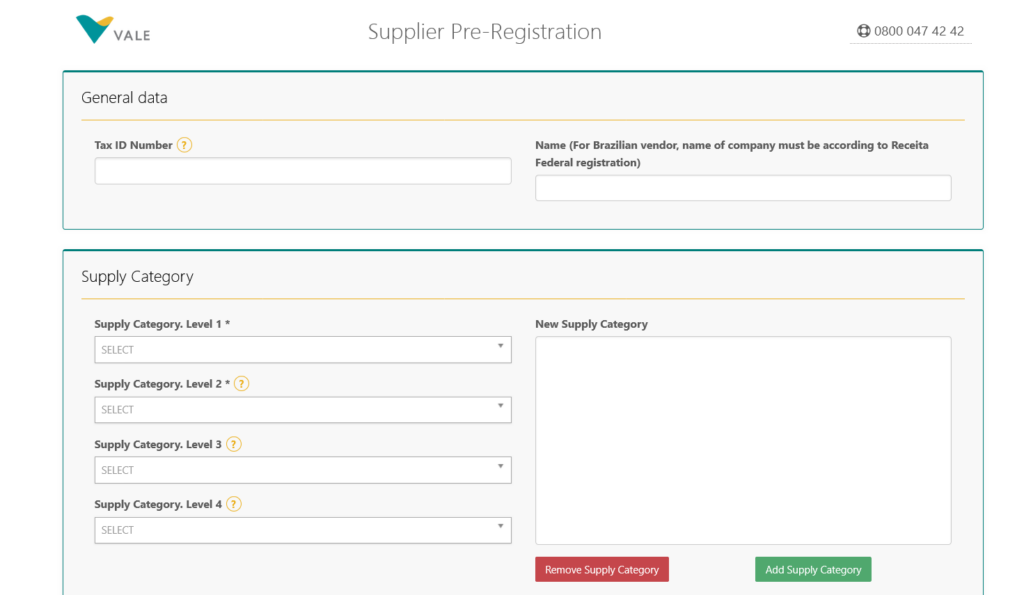
Source: Vale
In short, by maintaining a living database of trusted suppliers, procurement teams speed up onboarding.
And more than that, they build agility into the entire supply chain, ready to adapt to whatever challenges come next.
How much time could your team save if even one of these steps became standard practice?
Supplier onboarding doesn’t have to be the bottleneck it has long been.
With smart preparation, automation, reliable data, and the right partners, procurement teams can accelerate onboarding while maintaining control and compliance.
Start with even one of these tips—and watch your onboarding time shrink.